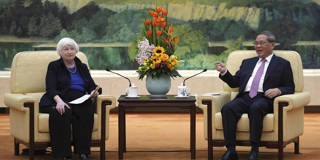A global economic slowdown, together with rising geopolitical tensions, has led to overcapacity in crucial Chinese industries like alternative energy and electric vehicles. The only feasible solution is for Chinese companies to expand their overseas investments, particularly in the United States.
BEIJING – During her recent visit to Beijing, US Treasury Secretary Janet Yellen criticized her Chinese counterparts, arguing that China’s government subsidies have led to overcapacity in crucial sectors like alternative energy and electric vehicles (EVs). This, she contended, provides Chinese companies with unfair cost advantages that enable them to outcompete American firms. But while Yellen was right to point out China’s overcapacity problem, her assertion that government subsidies are the root cause was misplaced.

BEIJING – During her recent visit to Beijing, US Treasury Secretary Janet Yellen criticized her Chinese counterparts, arguing that China’s government subsidies have led to overcapacity in crucial sectors like alternative energy and electric vehicles (EVs). This, she contended, provides Chinese companies with unfair cost advantages that enable them to outcompete American firms. But while Yellen was right to point out China’s overcapacity problem, her assertion that government subsidies are the root cause was misplaced.